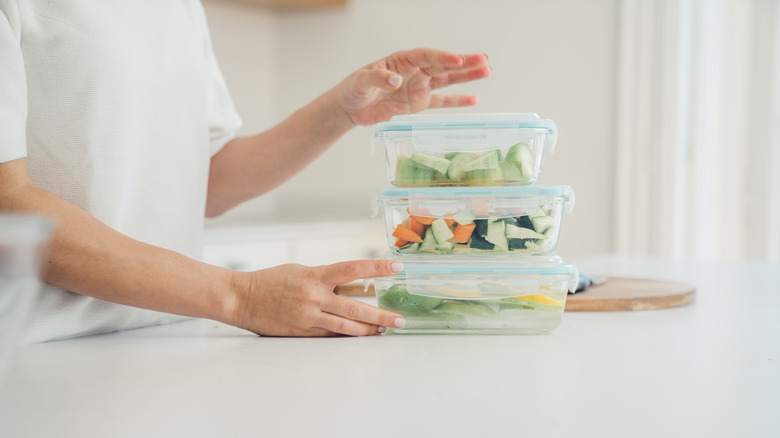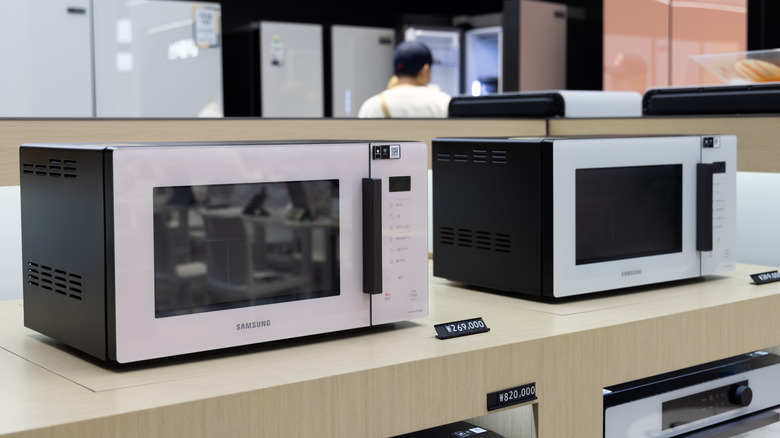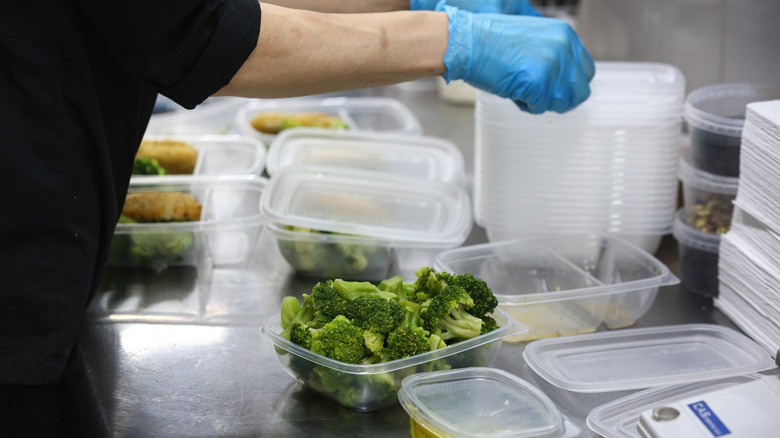Sorry, But Microwave-Safe Plastic Is A Myth
It's hard to escape plastic goods. They make our lives easier in so many ways, especially when it comes to storing and transporting food. What would you do if you had to lug your lunch to work in a heavy glass or ceramic container?
But, you've probably been warned in the past not to microwave plastic food storage containers due to the materials breaking down. This led to the advent of "microwave-safe" options, but as the years have gone by, more and more research has confirmed that even if your Tupperware carries this label, it's not really safe.
In most cases, the term largely means that the container itself won't be harmed by being in the microwave. Even with the heat, it will maintain its shape, and won't crack, catch on fire, or get so hot you won't be able to pick it up. But, there's no guarantee that just because it's microwave-safe, it's safe for you, too. In fact, it's most definitely not.
Why you shouldn't microwave plastics
If you leave your food in a plastic Tupperware in the fridge for a few days, it can end up filled with microplastics and nanoplastics that shed over time. (This is the same reason why you shouldn't refill plastic water bottles.) When you then microwave the plastic containers, the heat releases these particles at a far faster rate.
The kitchen appliance works by sending waves through the container, and into your food, thereby heating it up. Though these waves don't actually penetrate the "microwave-safe" plastic containers, the warmth from your food will often reverse heat the container. The plastic then has a tendency to break down when exposed to hot temps, and the act makes the material porous, which is why you can end up with stained Tupperware from heating brightly-colored sauces.
This results in two things: Those invisible nanoplastics and microplastics will be released into your food, and whatever chemicals have been added to your plastic container to make it sturdy like toxic BPA and phthalates will also come unchained and contaminate your lunch.
Why microplastics can be so dangerous
Many of the chemicals found in plastics have been seen as endocrine disruptors, which can wreak havoc on your immune system and contribute to a higher risk of a number of diseases and disorders, according to the National Institute of Health. Many of the long-term side effects of consuming foods held in plastics over time are unknown, but researchers have seen a number of short-term issues in their research, largely because of the ability of microplastics to trigger immune responses, which may cause inflammation and kill important white blood cells.
There are seven types of common plastics found in our day-to-day life, and they vary in terms of how susceptible they are to breakage, i.e., how likely they are to release harmful chemicals into your food. Type 5, or polypropylene, and Type 2, or high-density polyethylene (HDPE), are considered safer than other types due to their rigidity. The worst plastic to microwave is Type 1, or Polyethylene Terephthalate, which is used for many of the single-use plastic food containers you might get with a takeout order. None of these types of plastics are recommended for microwaving.
So, what should you use instead of plastic Tupperware? Though heavier, glass food containers are a healthier alternative. They don't leach chemicals into your food, they're safe to microwave, and they tend to last longer than plastic, making them more environmentally friendly as well.



